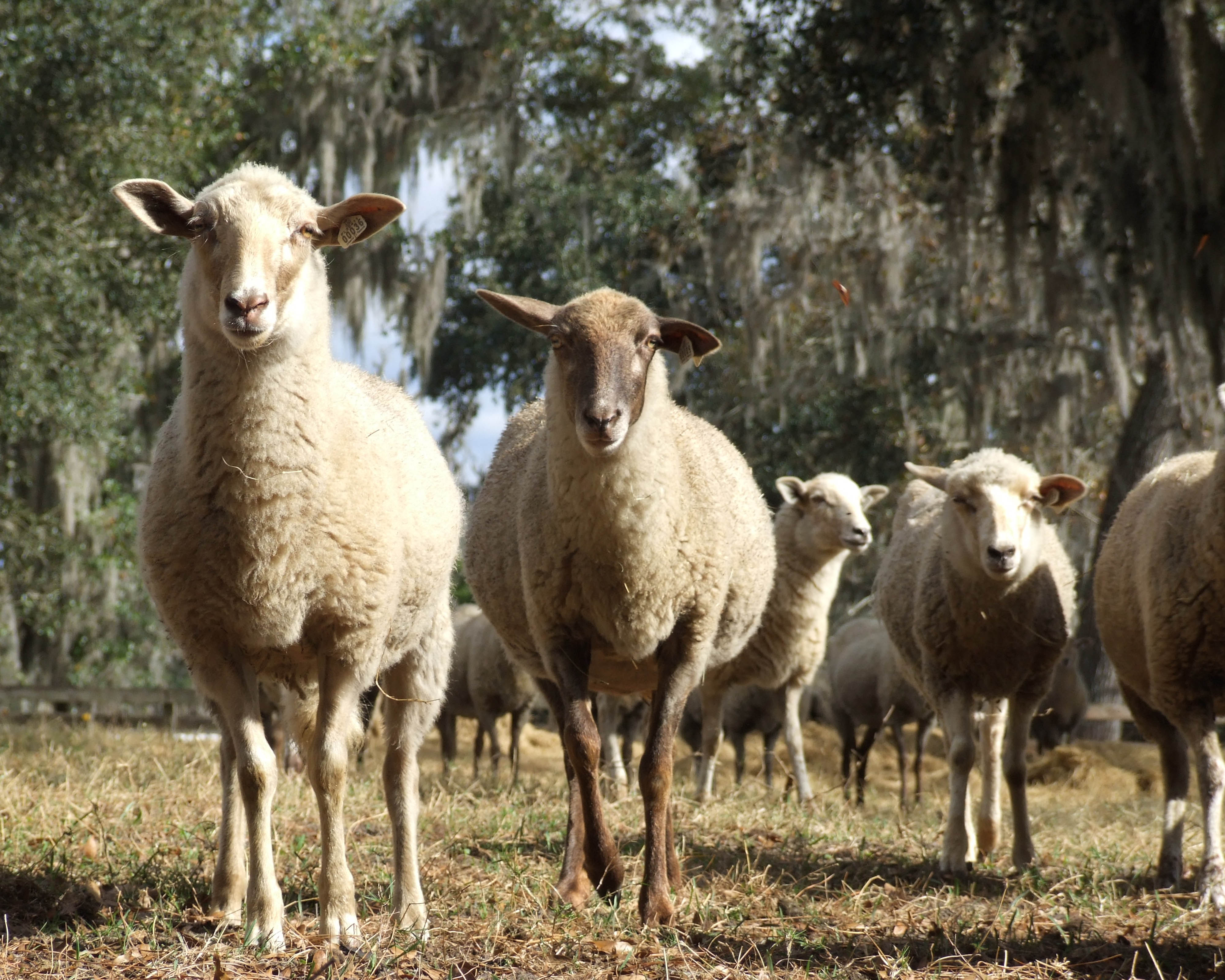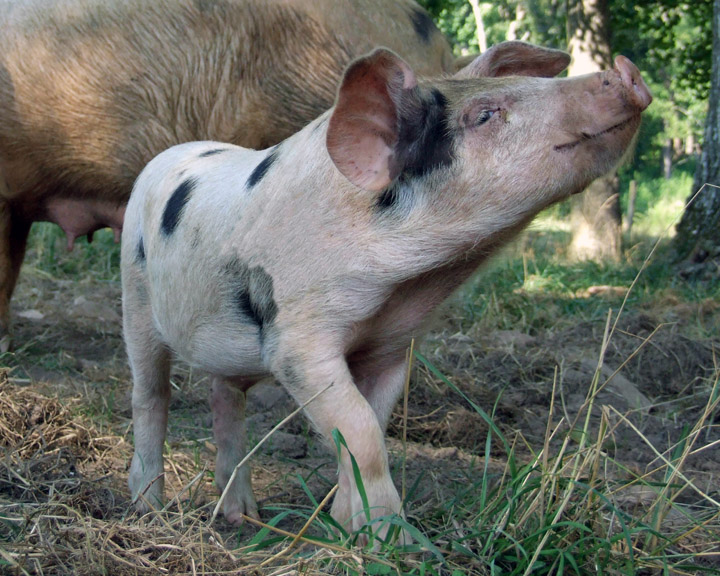Livestock diversity for food security
19.12.2019
by Jeanette Beranger | The Livestock Conservancy
This fall, 300 livestock experts from over 30 countries came together for the 9th Multi-Stakeholder Partnership Meeting of the Global Agenda for Sustainable Livestock (GASL). Plenary sessions were held at Kansas State University, under the theme “Innovation for Sustainable Livestock Systems,” and constituted an amazing opportunity to brainstorm on behalf of the planet: how can we feed a global population of over 9 billion by 2050 while balancing the social, environmental and economic dimensions of livestock sector growth?
The United Nations Sustainable Development Goal (SDG) 2 seeks to end hunger, achieve food security, improve nutrition, and promote sustainable agriculture. Across four days in the “Little Apple” college town of Manhattan, Kansas, participants exchanged ideas to improve production efficiency, restore value to grasslands and manage manure. But the bedrock of a sustainable livestock system is diversity. SDG Target 2.5 – maintaining the genetic diversity of crops and livestock – makes this abundantly clear. I was at the GASL meeting to represent The Livestock Conservancy, and underline the critical importance of local, heritage breeds for sustainable livestock systems.
The Livestock Conservancy works to conserve about 150 breeds of endangered livestock and poultry in the US and assist other countries in developing similar programs for their native livestock. To my surprise, I and my colleague from the Food Forever Initiative, Catherine Marguerat, were two of only a very small handful of people talking about livestock biodiversity at the GASL meeting. Most participants were exclusively using commercial livestock and hybrid breeds as part of their efforts to intensify livestock farming while ensuring it is more sustainable.
Up to a point, this makes good economic sense. Climate change is already putting a strain on farming systems, and livestock will have to be better adapted to more difficult environments if we are to get anywhere close to the 70% boost in production needed to feed the future. Although many traditional or local breeds are better suited to challenging environments, they may not be as fast growing or productive as their commercial counterparts. As a result, many farmers turn to crossbreeding of local and commercial breeds for more productive as well as better adapted offspring.

But we can’t just talk about hybrids, and forget what is happening to overall genetic diversity. In many cases, crossbreeding is done without putting systems in place to preserve purebred local breeds. Local breeds are thus at risk of being completely replaced or crossbred out of existence – every week, the Food and Agriculture Organization (FAO) estimates, we lose an average of two domestic animal breeds around the world. Thousands are endangered.
Biodiversity within our agricultural systems is vital to food security. As the Livestock Conservancy’s 1994 publication Taking Stock notes:
Genetic diversity within a breed is the presence of a large number of genetic variants for each of its characteristics. All breeds within a species share at least 50% of the total diversity for the species as a whole. The other 50% is unique within the species. This variability is significant because it allows the species to adapt to changes in environments or other pressures by selection for the most successful variants. The opposite of genetic diversity is genetic uniformity. A population that is genetically uniform may be exquisitely suited to a particular environment. Unfortunately, specialization frequently results in an inability to meet the challenges imposed by and change in the environment or in selection goals. A truly uniform population has no reserve of options for change. In today’s large-scale agricultural systems, only a relatively few highly specialized breeds are used to supply a majority of the world’s food resources. This places the world’s food supply at risk if anything should happen to these breeds such as disease or irreversible adverse genetic mutation.
Breed conservation is critical for maintaining global agrobiodiversity. The Livestock Conservancy has helped prevent extinctions, expanded populations of rare breeds, and worked with small farmers and breeders interested in raising heritage animals. We conduct research and outreach to promote such breeds and work with like-minded organizations and networks to safeguard genetic diversity.
One such partner is the Food Forever Initiative, which is committed to raising awareness on the urgency and importance of protecting the diversity of crops and livestock within our food system. Indeed, the support provided by the Crop Trust, which houses the Initiative’s secretariat, to the Svalbard Global Seed Vault runs in parallel with our work in partnership with the US Department of Agriculture to collect the semen, ova and epithelial cells of rare breeds for long-term storage at the National Animal Germplasm Program repository in Colorado. The Crop Trust advocates for crop diversity, and we do the same for livestock diversity: two sides of the same coin.

The GASL meeting was focused on innovation for sustainable livestock systems, including through biotechnology, trade and animal welfare. But there’s a fundamental aspect of improving production efficiency through livestock intensification that is concerning, because it goes against the original purpose of domestic animals. In theory, we raise cattle and poultry because they can eat food that we can’t, and turn it into high quality proteins that we in turn can eat. But that equation is turned on its head if cattle are raised on grain rather than grass. Chef and food writer Andrea Burgener puts it best when she says, “There’s no debate: growing grain for cattle – who eat grass, not grain – is one of the worst ideas humans have had.”
Vast tracts of land across the world – arable land traditionally used to grow crops for human consumption, as well as newly cleared rainforests – are now set aside for monocropped grain to feed livestock. The inefficiency of converting this grain into commercial meat (in the case of beef, 7 kilos of grain are required to produce 1 kilo of meat) reinforces the argument for a return to forage-based feed systems that this story from the Crop Trust makes. In fact, this has to be the way forward for a livestock system that is sustainable in the true sense of the word, and as GASL puts it – good for people, and for the planet.
